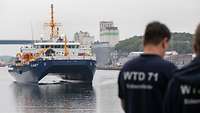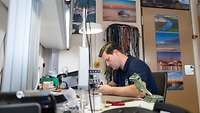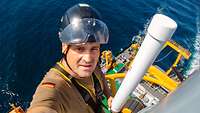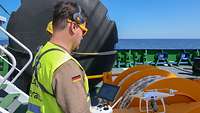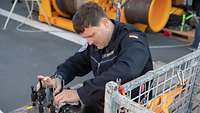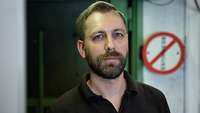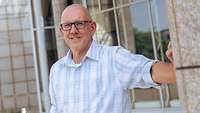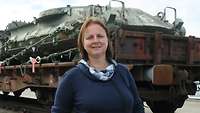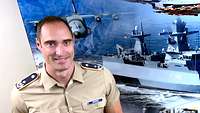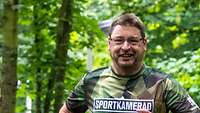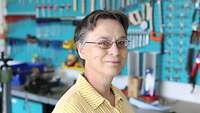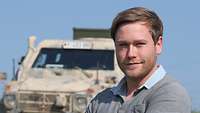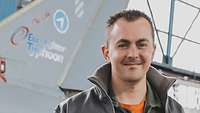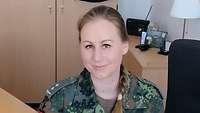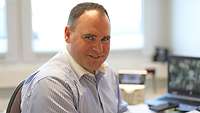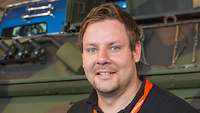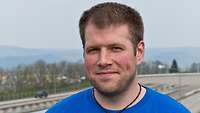Research at WTDWehrtechnische Dienststelle 71: Tim Richter is a metrology expert
Research at WTDWehrtechnische Dienststelle 71: Tim Richter is a metrology expert
The technical civil servant Tim Richter works at the Bundeswehr Technical Center for Ships and Naval Weapons, Maritime Technology and Research (WTDWehrtechnische Dienststelle 71), which is based in Eckernförde on the coast of the Baltic Sea.
There, he supports research experiments and performs technical tasks in the field of metrology and data collection with a focus on underwater acoustics.
Mr. Richter, what exactly is your task at WTDWehrtechnische Dienststelle 71?
Among other things, I plan expeditions and prepare and install the measuring equipment. But I am also in charge of individual organizational tasks such as requesting cranes to load and unload the vessels.
The research experiments are mainly performed at sea with the ships and boats of WTDWehrtechnische Dienststelle 71. That's why I am at sea two to four times a year for one to four weeks on average.
So, you are involved on land and at sea?
Yes, the preparations at port take one to three days. First, the measuring equipment is loaded onto the research vessel. For this purpose, we use the on-board or mobile cranes.
Apart from that, all other necessary devices must be assembled and connected. We wire up the measuring devices on deck, connect the winches to the power supply and mount the cable blocks for the cables of the crew at the stern. Because of my climbing authorization, I also mount the antennas in the masts.
After a successful test run of all systems, the expedition and the actual research work can start.
And what are your tasks at sea?
We often work 12 hours a day, seven days a week. One of my tasks is to lower the measuring devices into the water, with the help of the crew. After a series of tests, I provide the scientists with the data we gained.
It can also happen that we take measurements around the clock. In this case, I must occasionally be on night watch and work at night. Apart from these main tasks, I am qualified to pilot unmanned aerial vehicles (drones) and I am a high-altitude rescuer.
What measuring equipment do you use, and what exactly do you measure?
We use buoy systems, for example. These are anchored or drifting floating devices with highly sensitive underwater microphones (hydrophones) or entire hydrophone chains with the respective data recording electronics and a power source integrated into them.
One of our towed array sonars is one of the largest and more complex systems in this context. It transmits very low frequencies detected by a hydrophone chain that is trailed behind the vessel. This system is unique within the Bundeswehr, so we participate in maneuvers with the German Navy on a regular basis.
That sounds exciting and eventful!
Yes, absolutely. I like the combination. I don’t only sit in the office, but I also travel for a manageable amount of time. We face new challenges with every system and every expedition. Especially at sea, where the next specialized shop is out of reach, a lot of improvising talent is required at any time.
„Failure is not an option“: This Apollo 13 principle touches the core of our work. We are constantly looking for means and solutions to fulfil our tasks. Teamwork is always needed. This is very important and characteristic of our team.
What do you like most about your job?
The challenges that come with the expeditions. A nice side effect is that I get to see a few places.
Most of the time I travel in the North Sea and the Baltic Sea or off the coast of Norway. There were, however, also expeditions to the Mediterranean and even to the United States. The last journey, for example, went to Portugal where we participated in a NATONorth Atlantic Treaty Organization experiment.
You just don’t have such opportunities in every job.


